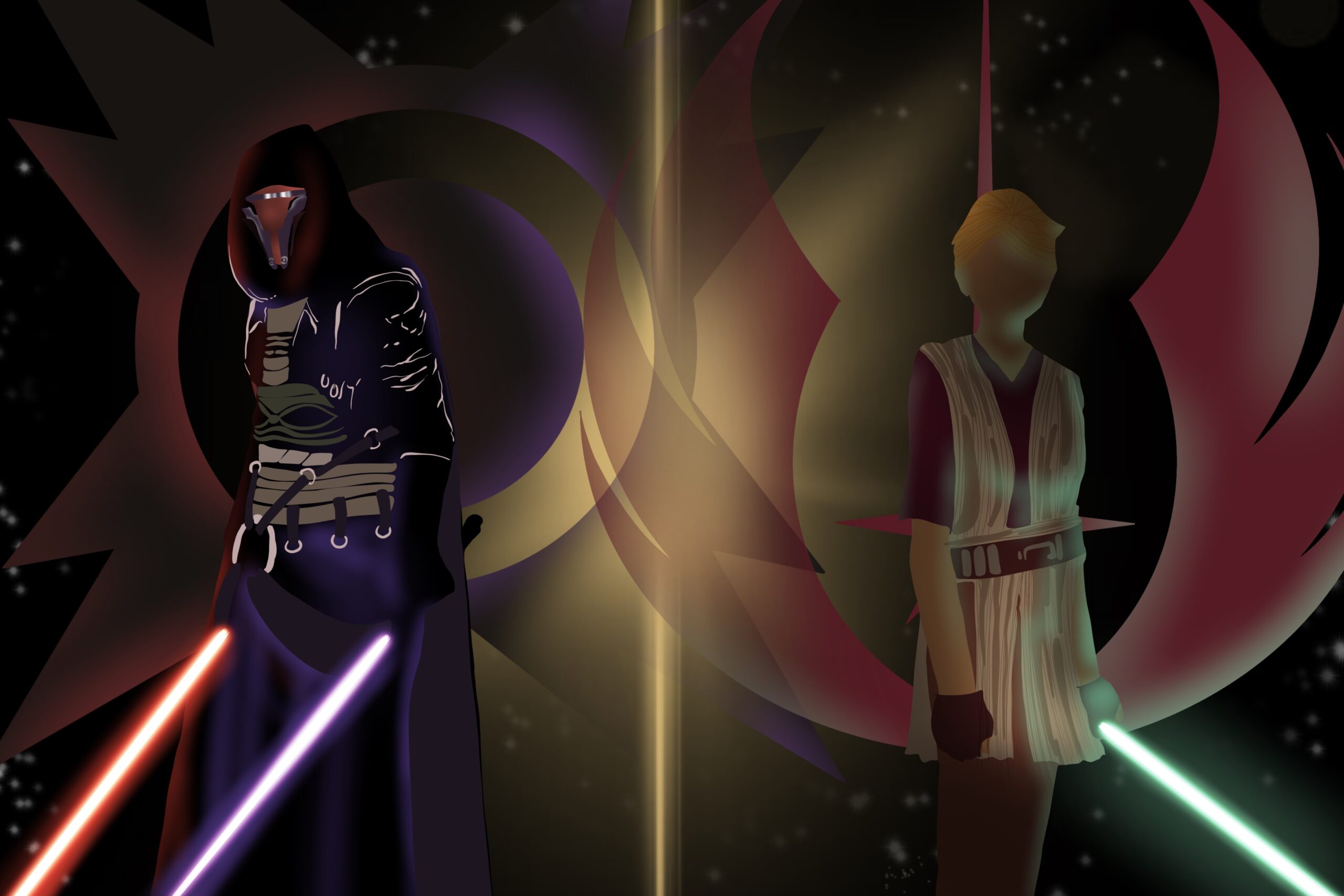How the history of the “Star Wars” universe led to the events of the Skywalker saga.
During the Prequel Trilogy (1999-2005), audiences witnessed the beginning of the fall of the High Republic (500-100 BBY) and the rise of the Empire. The original trilogy (1977-1983) showcased the Rebel Alliance and Luke Skywalker’s triumph over the Empire. In the sequel trilogy (2015-2019), a new faction, the First Order, emerged to challenge the newly founded Republic, only to be defeated by Rey Skywalker. BBY refers to Before the Battle of Yavin, which marks the end of Episode 4, while ABY refers to After the Battle of Yavin, encompassing everything after Episode 4.From the Jedi’s multiple battles against the Sith to their confrontations with the Mandalorians and the flourishing era of the Republic, the galaxy’s history is rich with countless tales.
The story of the “Star Wars” universe did not start with the birth of Anakin Skywalker, nor did it reach its climax with Luke Skywalker’s destruction of the Death Star, and it did not end with the death of Emperor Palpatine at the hands of Rey Skywalker. Even before the Jedi and the Sith began their millenia long feud, empires such as the Rakatan Infinite Empire ruled the galaxy for approximately ten-thousand years. Their mastery of the dark side of the force allowed them to conquer and enslave more than five hundred planets with their collapse only coming once their connection to the force was severed due to a plague.
The history of the Jedi began with their emergence as the Jed’aii around 25,000 BBY. Between then and 50 ABY, numerous conflicts erupted among the diverse races, planets and factions within the “Star Wars” universe. These conflicts not only set the stage for but also provided crucial context to the narratives of the three main trilogies.Much of the pre-Skywalker era has been relegated to “legends,” by Disney. But there are indications that the upcoming series, “The Acolyte,” may draw inspiration from these stories, canonizing them.
During the Dawn of the Jedi, a group of force-sensitive warriors, philosophers and scholars came together to form the Jed’aii Order. Their primary objective was to maintain a delicate balance between the light and dark sides of the Force. Unlike the Jedi Order of the Skywalker saga, which exclusively adhered to the light side, the Jed’aii embraced both aspects, believing it was essential to keep Tython – their homeplanet – in equilibrium. It wasn’t until the Force Wars that the Jed’aii Order splintered into two factions: the Jedi Order and the Dark Jedi, practitioners of the light and dark sides respectively. During these conflicts, the Dark Jedi discovered the potency of the dark side, using its rage and aggression to gain an advantage over their adversaries. However, this power exacted a heavy psychological toll, leading to increased tendencies toward greed, anger,and a lust for power.
The schism between the two ideologies deepened over time, culminating in the First Great Schism of 24,500 BBY. This conflict arose when the Legions of Lettow, a sect of Jedi who embraced the dark side, waged war against the Jedi Order. Some accounts suggest that the war was initiated by the Jedi themselves. Despite the eventual victory of the Jedi, the brutality and intensity of the conflict planted seeds of division within the Order, which festered over millennia.
The Second Great Schism occurred in 7003 BBY, marking the definitive break of the Dark Jedi from the Jedi Order. This rupture led to the Hundred-Year Darkness, a war waged by the Dark Jedi against the Jedi. Ultimately, the Jedi prevailed, forcing the dark siders into exile, where they would eventually establish the Sith Order. Since then, the Jedi and the Sith have been locked in a perpetual struggle, reaching its climax during the events of the Skywalker saga.
While the Sith are commonly portrayed as the primary antagonists in Star Wars, many fans criticize the Jedi for their rigid adherence to the light side of the Force. Without teaching their Padawans how to manage their emotions across the spectrum, numerous students – including Anakin Skywalker – succumbed to the temptations of the dark side.
In addition to the conflicts between the Jedi and the Sith, pre-Skywalker lore encompasses the Mandalorian Crusades and the Mandalorian Excision. While these events are not featured in the films, they were explored in the Clone Wars TV show, offering insight into the Jedi Order’s interactions with other societies. These events demonstrate that the Jedi were not always pacifists solely focused on negotiation, but were also capable and willing to confront threats to the Republic directly.
The Mandalorian Crusades, spanning from 7000 BBY to 3996 BBY, witnessed the Spartan-like Mandalorians invade and conquer neighboring planets. These conquered planets and their people, unless entirely eradicated like the Fenelar people of Fenel, were assimilated into Mandalorian Space. This region remained under Mandalorian control until they posed a threat to the Republic and, consequently, the Jedi. This tension culminated in the Mandalorian Wars (3976-3964 BBY), a full-scale conflict between the two factions.
Despite the Mandalorians’ formidable warrior culture, their lack of Force sensitivity hindered their ability to combat the Jedi. However, they compensated by developing advanced technology, such as wrist-mounted flamethrowers, which posed challenges to the Jedi as their lightsabers could not deflect fire. The decisive Battle of Malachor V (3960 BBY) resulted in the Jedi emerging victorious, albeit at a high cost in lives on both sides.
This defeat only fueled the Mandalorians’ animosity towards the Republic and the Jedi, leading to the Mandalorian Excision (738 BBY), a brief conflict. Although the Jedi emerged triumphant, their bombardment of Mandalore – the Mandalorian homeworld – left swathes of the planet desolate. This further entrenched the resentment harbored by certain Mandalorians, particularly those adhering to traditionalist beliefs, leading to the formation of Death Watch. Death Watch sought to restore Mandalorian society to its glory days, reminiscent of the Mandalorian Crusades.
The effects of these events still ripple through contemporary “Star Wars” media; influencing what is happening and what may or may not happen. The conclusion of the Skywalker saga suggests that Rey, the last surviving Jedi, will initiate the reestablishment of the Jedi Order. However, it is hinted that she may adopt the philosophy of the Jed’aii Order, seeking to find a balance between the light and dark sides of the Force; thus fulfilling the prophecy of bringing balance to the Force once and for all. Death Watch has also shaped the development of “The Mandalorian” (9 ABY), as it was them who rescued Din Djarin when his village was attacked by the CIS during the Clone Wars. How history affects the future of star wars.
Infinite Empire JMGD.jpg (Rakatan Civilization) (Image via Disney)
https://starwars.fandom.com/wiki/Force_Wars?file=ForceWars-TJP.jpg (Jedi vs Dark Jedi) (Image via Disney)
Force Wars-TEA.jpg (Force Wars) (Image via Disney)
main-qimg-5047f38cf80911d5b91e1d6e9d49065c-c (Mandalorian Flamethrower) (Image via Disney)
https://vignette.wikia.nocookie.net/starwars/images/a/a5/Vizsla_brutal.jpg/revision/latest?cb=20110922224920 (Death Watch leader executing his troop for losing a fight) (Image via Disney)

















